Una pequeña revisión /
A brief overview
Sobre enanas marrones /
On brown dwarfs
|
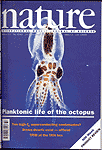
|
Teide 1:
La primera enana marrón confirmada /
The first confirmed brown dwarf
|
"Brown dwarfs exist -- official". In 14 September 1995, the Nature's
cover claimed the «Discovery of a Brown Dwarf in the Pleiades Star
Cluster», based on photometry, spectrum and proper motion determination.
(Rebolo et al. 1995). «Brown Dwarfs in the Pleiades Cluster
Confirmed by the Lithium Test» (Rebolo et al. 1996) was the confirmation
via the lithium test of the substellar nature of the object.
The object took the name from the volcano where the telescope used to firstly
detect the brown dwarf is, in the Canary Islands.
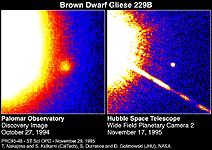
|
GJ 229B:
La primera enana marrón T /
The first T brown dwarf
|
GJ 229B was the second brown dwarf to be discovered, orbiting at around 50 AU of
a M1V star.
Nakajima et al. (1995) and Oppenheimer et al. (1995) published the discovery and
spectral confirmation a few weeks after Teide 1.
However, given its remarkable spectral features, that makes the dwarf to be
"incontrovertibly" different from a star, GJ 229B has received more attention
and fame.
Almost ten years after its discovery, this T6.5 dwarf is still one of the
coolest brown dwarfs ever studied.
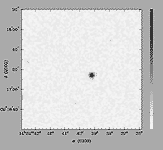
|
GD 165B (CX Boo B):
La enana L más peculiar /
The most peculiar L dwarf
|
Its peculiarity is due to the object GD 165B is orbiting around: a white dwarf!.
Zuckerman & Becklin (1988) discovered it in a search for near infrared execess
in white dwarfs, which could point to the existence of cool nearby companions.
It was not until the end of the end of the 90's that GD 165B was recognized as
one of the first examples of spectral class L.
However, we do not still know if it has enough mass to burn hydrogen and, hence,
if it should be called star or brown dwarf.
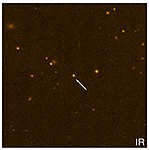
|
LP 944-20:
La primera enana marrón catalogada /
The first catalogued brown dwarf
|
Luyten published in 1975 a catalogue of high proper motion sources, in which LP
944-20 was not recognized as a brown dwarf. The detection of lithium in its
spectrum had to wait for more than twenty years (Tinney 1998).
Nowadays, it is known to belong to the young Castor moving group and, also, to
be the first unrecognized brown dwarf.
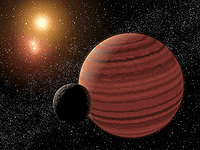
|
GJ 570D:
La enana marrón más fría /
The coolest brown dwarf
|
In 2000, Burgasser and the 2MASS Project (Burgasser et al. 2000) put the strip a
few Kelvins cooler than GJ 229B: GJ 570D, a T8-type brown dwarf, the faintest
component in a quadruple system. It is for the moment the coolest object ever
discovered out of the Solar System. When cooler objects were detected, of around
500 K, their atmospheres will be enough cool to maintain water vapour clouds, as
found in our planet.
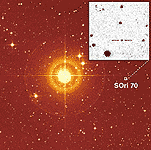
|
S Ori 70:
El objeto subestelar menos masivo /
The least massive substellar object
|
The Trapezium and the Orion Belt regions, together with the rich star-forming
regions in the South Hemisphere, are the best sites to look for young, low-mass
brown dwarfs. The younger a substellar objects is the brighter and hotter is.
Hence, the lower mass objects have been detected in this regions.
Spectroscopy and model fits give S Ori 70 the gold metal of the lowest-mass
free-floating substellar object: its mass is in the range from 2 to 8 Jupiter
masses (Zapatero Osorio et al. 2003). We can call it a real isolated
planetary mass object.
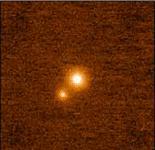
|
epsilon Indi Bab:
La enana marrón (binaria) más cercana /
The nearest (binary) brown
dwarf
|
Epsilon Indi B is to date the nearest substellar object, only 3.6 parsec from
the Sun. Scholz et al. (2003) identified it as a common proper motion companion
to the K5V-type star epsilon Indi A, at a projected separation of 1500 AU.
They classified epsilon Indi B as an early T dwarf.
However, it has been recently claimed to be actually two T dwarfs, with spectral
types T1 and T6, and masses 47+/-10 and
28+/-7 MJup, respectively.
They have been named epsilon Indi Ba and Bb. They are about 2.65 AU apart, so
the measurement of the orbital motion will permit an accurate determination of
the total mass of the system in about 15 years (McCaughrean et al. 2004).
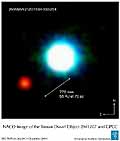
|
2M1207-39B:
El primer planeta detectado directamente alrededor de una estrella /
The first directly-detected planet around a star
|
In April of 2004, a team of European and American astronomers detected a faint
and very red point of light very near (at 0.8 arcsec angular distance) a
brown-dwarf object, designated 2MASSWJ1207334-393254.
2M1207-39 is a member of the TW Hydrae stellar association located at a
distance of about 230 light-years.
The discovery was made with the adaptive-optics supported NACO facility at the
8.2-m VLT Yepun telescope at the ESO Paranal Observatory (Chile) (Chauvin et al.
2004).
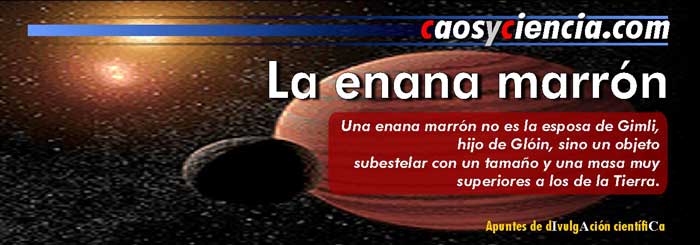
|
La enana marrón
|
Una enana marrón no es la esposa de Gimli, hijo de Glóin, sino un
objeto subestelar con un tamaño y una masa muy superiores a los de la
Tierra.
Un pequeño artículo de divulgación, sólo en
español.
Haz "click" sobre la imagen superior para leerlo.









